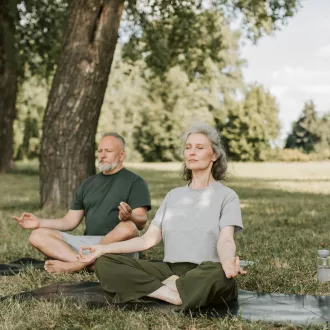Transcription Exercises
After being convinced of the incredible importance of communication and its impact on social skills, we will start different exercises for the correct adaptation of the voice. For this we will take into account: breathing and vocalization. We say we know how to breathe but, do we do it correctly? What is diaphragmatic breathing?
In this video we will discuss in detail the breathing, as well as different exercises for voice modulation. Do not forget to do these exercises, if your communicative intention is that the message reaches the receiver's ears in the CORRECT way.
Breathing.
What is the relationship between breathing and phonation?
Phonation is used to designate the physiological process that leads to VOICE. That is to say, the air coming from the lungs, once it reaches the vocal cords, vibrates. This vibration emits a sound. The muscles that control speech: tongue, lips, among others, are responsible for transforming this sound into vowels or consonant sounds.
Place yourself in front of a mirror and notice this process. Breathe deeply. Become aware of the air, and then say any word. For accuracy, cover your mouth. Do you notice the vibration now?
By using the appropriate pauses and depth on each inhalation and exhalation, we maximize that VIBRATION.
One of the benefits of correct breathing is the circulation of oxygen throughout the bloodstream, which significantly reduces stress or anxiety. A calm person, emits a softer breathing.
What does breathing in a calmer way imply? A concentration, necessary to understand and make ourselves understood. We are focusing on the here and now, therefore we have full use of ATTENTION. Everyone we talk to will thank us for it!
How do you breathe?
Now, let's check how we are breathing.
Sit in a comfortable position. Inhale the air. Did you notice that your abdomen expands or on the contrary shrinks?
If you have learned to inhale by shrinking the abdomen, it is not bad at all. After all, you are still alive. But if it is true that you do not manage to fully enhance your lung capacity, you must learn to change that habit.
Breathing through your mouth is not a good way either. If you are a person who suffers from asthma, I will understand that in some occasions you are forced to breathe through this way, but do not take it as a habit, if you do not suffer from any disease.
Diaphragmatic breathing.
Before understanding what diaphragmatic breathing is, we must identify: What is the diaphragm? It is a muscle in charge of separating the chest from the abdomen. It is located below the lungs and the heart.
How is diaphragmatic breathing useful? It allows us to balance the speed at which we speak, avoiding shortness of breath and not finishing sentences. The lungs are not the only ones that benefit from this method. The nervous system will also be happy. Without it, you cannot think, reason, speak or listen.
As breathing is an automatic activity, we will often resort to the old habit of breathing badly. Therefore, we must assume an iron discipline to practice this method.
Without beating around the bush, here is the diaphragmatic breathing technique:
- Start breathing. Inhale: fill your stomach with air and exhale: shrink it. Take about five minutes to go as deep as you can with each breath. If it helps, keep pressure on your abdomen with your hand and guide your breathing. Repeat mentally: "When I take the breath the abdomen will "swell" and when I release the breath it should "sink".
Vocalization.
Now we will take into account the vocalization:
Let the air escape to articulate the vowels in different tones:
- Aaaa.Eeee.
- Use different levels of intensity, start soft and increase the rhythm little by little. It is also useful to try your favorite song. So, let's sing!
- This work will be done with the throat, so try to keep it relaxed. With this we avoid fatigue when we talk about a relevant topic or getting stuck when we want to talk faster than we are thinking.
- Ultimately we will dedicate ourselves to reading. We will use diaphragmatic breathing and the pencil in the mouth, under the tongue. We will articulate as well as possible. This technique should be done frequently, at least twice a day.
- Tongue twisters: Enjoy performing the following step by reciting a tongue twister, increasing the intensity gradually. You can help yourself with the ones shown below
- Pancha iron with four irons, with how many irons will Pancha iron. The sky is bricked up. Who will unbrick it? The one who unbricks it, will be a good unbricker.
Save yourself!
The job is up to you. Record yourself while creating a speech. Forget the presence of the camera and vocalize as you would in real life. Don't set limits for yourself, check your body language as well.
After you have tried this last exercise and improved in quality, you can propose a person you trust to be "the evaluator". You need feedback. With the observations and feedback, take care to improve and improvise a conversation. Demonstrate what you have learned. Ask him or her to point out the precise moment when you are making a mistake, so you know exactly what to improve.
exercises



